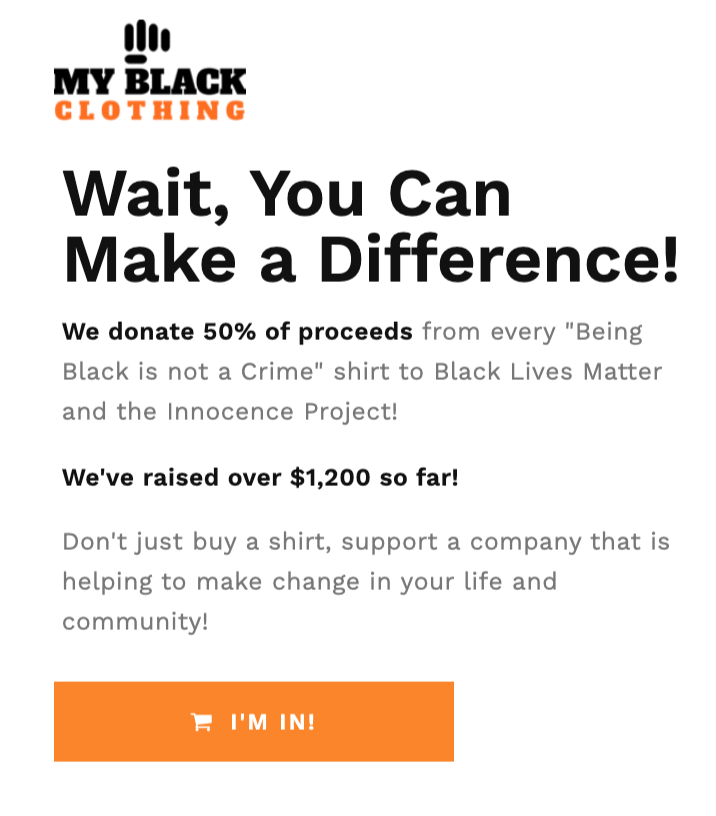

Last updated on
March 8, 2024
Prehistoric artifacts and cave paintings tell us that artists have been called to create great works since before modern homo sapiens walked the Earth. Today, art and handicrafts are bought and sold via the latest advances in internet and app technology. But the truth remains that artists of the past and artists today face the same basic struggles when it comes to getting paid—how to sell your works without feeling like you’re selling out through your marketing.
No matter what it is you create—from fine oil paintings all the way to hand-stitched dog costumes—you are a maker at heart. But the deep connection artists feel to their works can make the act of selling these creations an uncomfortable experience. There’s enough great, practical information out there about how to write sales copy for your eCommerce site or increasing engagement with your sales emails. But how does an artist overcome the mental and emotional sides of things when it comes to making a profit off the art they’ve made?
First, if you aren’t already selling through your own eCommerce site or, better yet, building your email list, you really should jump on that. Online sales accounted for 10.4% of the retail market in 2017 and are expected to reach 22% by 2023. And with Covid-19, the switch to online shopping has become even more accelerated.
The rise of eCommerce has been equally a game-changer in the way art and creative goods are bought and sold online. Gone are the days where artists had to rely on middle-man sites like Etsy or find supportive local gallery owners for local exposure. Instead, eCommerce sites and sales emails provide independent artists with direct access to their fans who can easily browse, buy, and enjoy their products.
There are also several important consumer trends that eCommerce caters to. An easy-to-navigate sales process with recognizable checkout options can increase sales conversions when applied to an art-trepreneur’s website. After all, these are the things many artists rely on third-party selling platforms to provide.
Consumers are trained to trust what they know, and a professional eCommerce site made with Shopify (or any alternatives) is an easy way to give them what they need for you to make the sale. All of this adds up to independent artists and creatives being able to sell their works online successfully and relatively hassle-free.
Once an artist has an eCommerce site and has started collecting emails so they can keep fans and buyers updated, then it’s time to start marketing to make the sale. But this is where the mental roadblocks start popping up. Artists know art, but might be less familiar with modern principles of salesmanship. That’s okay. Here’s a list of ways you can overcome the “icky” feeling you have when trying to write that converting sales copy or craft an intro template for your latest email newsletter.
Unless you’re a literal streetcorner salesperson, it’s probably best not to come out with a sales pitch before you’ve introduced yourself. Potential customers want to be greeted by a name, a face, a story—aka you. This means shifting your focus from selling to relationship building.
On your eCommerce site, feature your artist headshot and a short bio somewhere on the homepage. Better yet, have that lead to a full About Me page where consumers can meet the mind and hands behind the art they are about to browse (and hopefully buy). In a direct email, leave space at the top for a short company update where you can reveal more of your personality and the inspiration behind your work.

Like it or not, you are a brand, and brand authenticity is a driving force in today’s sales market. People can sniff a fake a mile off and there are plenty of other freelance creatives and Etsy shops where they can find a similar product to yours. So if you’re going to build a relationship with your clients, do so in a genuine way.
Being authentic can manifest in a few different ways. Take time to craft an Artist’s Statement for your homepage. This can help clarify what you make and why. Consumers also need to trust that artists are going to deliver on their guarantees. This means being clear with and sticking to expectations and promises such as shipping times and return policies.
Trying every branding trick in the book and following every trend on the internet will not result in more sales. Consistency is key, and it’s easy to put forth a solid brand when it’s grounded in the truth of who you are as an artist.
Speaking of who you are, don’t be afraid to take a stand. Customers also want to see that brands have values and stand for something greater than themselves. In a recent survey, 60% of consumers say they would buy from or boycott a brand based on their response to current racial protests.
Your art likely already reflects your personal values. The 2018 Edelman Earned Brand study concluded that consumers were almost equally likely to buy when given values-led communication (43%) as when they encountered a product-focused message (44%). One can only assume that a little of both would increase those numbers further.

The best place to sell your art is on your own eCommerce website, but that doesn’t mean that’s where the relationship starts with your customers. If writing product descriptions and sending email newsletter updates isn’t comfortable for you, try starting on a platform where you are comfortable. A fun Instagram feed or an ongoing blog can be a great way to reach fans. Just be sure to always lead them back to your homepage or online store so you can make the sale.
Think of the way people look and sound when they talk about the things they love. Their enthusiasm is palpable, and this can be translated to your eCommerce sales copy and your direct sales emails—but only if you’re making things you love.
If the art you created doesn’t inspire you, then you’re going to be at a loss when it comes to writing product descriptions that inspire buyers. While some commercial appeal is necessary, following the popular trends will leave you with lackluster sales.
Instead, add an “Inspiration” tab to each product on your eCommerce site and be sure to reveal the reasons why that piece exists and looks the way it does. If you feel love for the items you're selling, then marketing your work won’t feel like pushy salesmanship.
It’s easy to sell your creative works when you stop thinking of them as products and start thinking of them as a service you are providing. After all, a painting isn’t purchased for the value of the canvas and paints. Its value comes from the feelings of calm or excitement or joy when someone views it.
What you make is not a “good” to be used; it is a creation waiting to be experienced. You’re selling confidence when they wear your latest fashion piece. You’re selling a unique design that solves a problem other products haven’t. You’re selling the pure pride and joy experienced when people gush over how amazing that artisan find is. Thinking of art as a service, not a good, will make writing your product copy and emails feel more like sharing and less like hard selling.
Asking for what they want or need can be very difficult for people, much less for an artist asking for a sale. CTAs (calls to action) are critical for every post, item description, or email blast. But that doesn’t mean you always have to ask directly for people to buy.
Consider other ways to get your fans and followers involved in your brand. Every interaction and connection with you will lead them one step further down your sales funnel. A call to action can be as simple as liking a social post or signing up for an email newsletter. You don’t always need to push a sale, but getting your audience used to your CTAs can make it less awkward when you do start asking directly for them to buy.

The vast majority of artists and creatives do not hit it big right out of the business gate. That’s okay! The right clients are out there and they know your worth; you may just have to be patient a while longer.
This is perhaps the most difficult mindset shift. Once you’ve set up your big eCommerce shop, you want sales to roll in now. If they don’t, then it’s easy to start down the road of negativity which eventually leads to many artists and solopreneurs giving up entirely. Persistence is just as important as patience.
Start with a concrete plan for implementing these mindset shifts. Then give yourself a tripwire, something that says “I’ve tried this option for long enough.” If you’ve been making sales, then great! Keep up whatever you’re doing. If things aren’t working so well, then pivot one aspect of your marketing strategy and keep trying.
Changing your mindset when it comes to marketing your creative works is a big task. But you’ve already overcome so much to start your artistic career. A solid eCommerce site and a growing email list are not guarantees you’ll start seeing the sales roll in. The intention behind your marketing and sales strategy is clear to consumers. In the end, remember that you have just as much right as anyone else to make a living doing what you love.
Content marketing guru at Mailmunch. I’m passionate about writing content that resonates with people. Live simply, give generously, stay happy.
Tags:

Hamna Abid
July 11, 2023

Hamna Abid
June 23, 2023

Ammar Mazhar
May 30, 2023